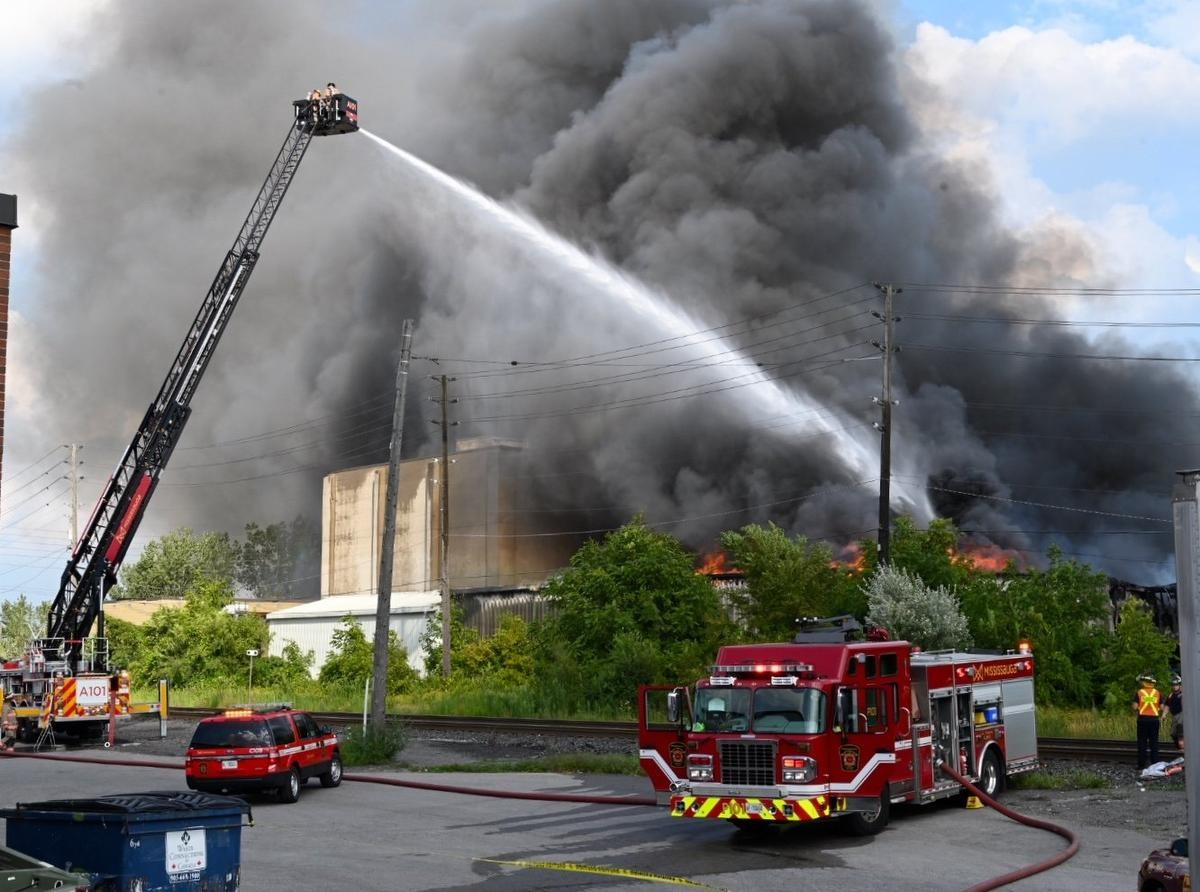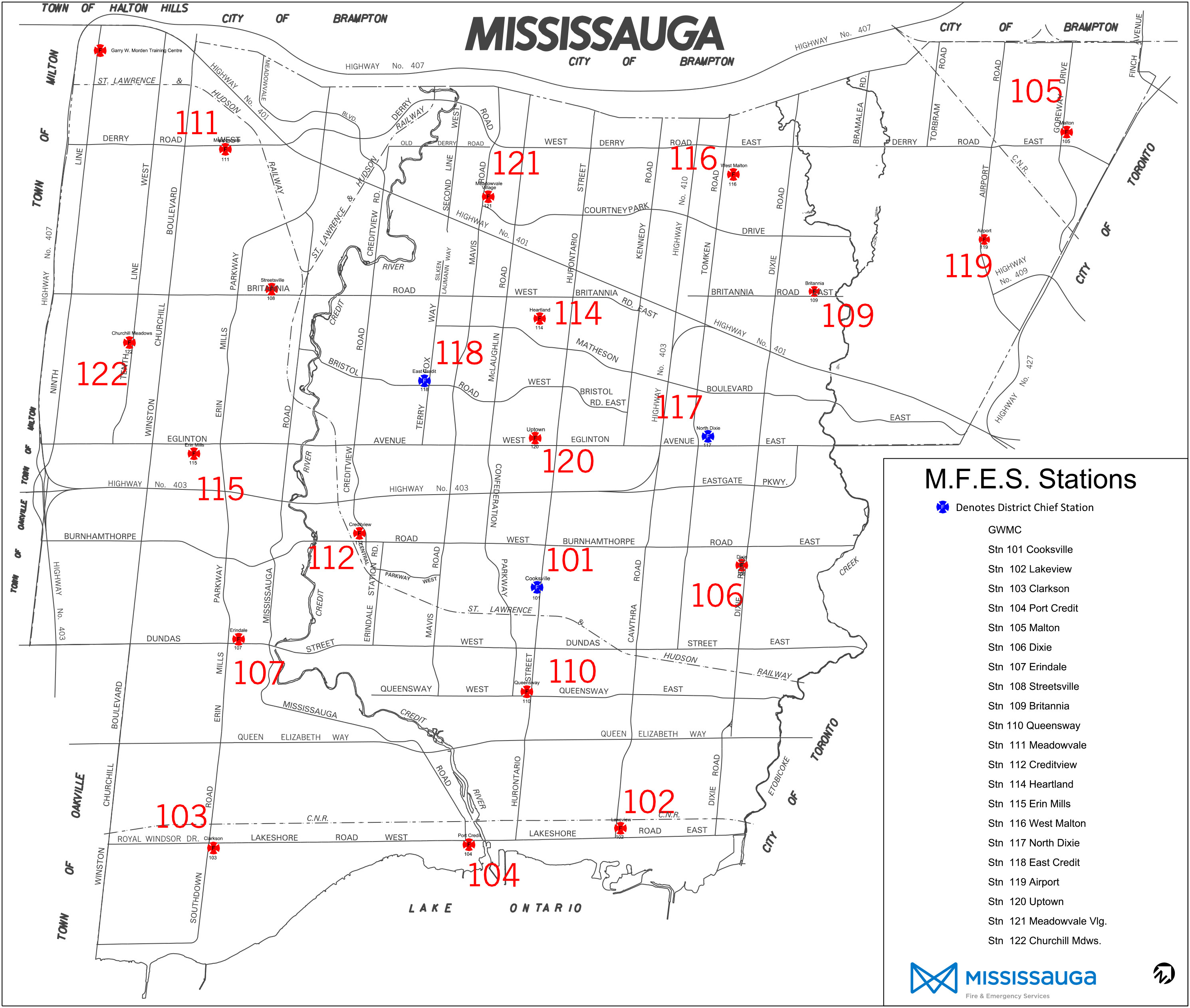
With less than half the stations it needs, Mississauga hopes investments in city’s crumbling fire infrastructure will repair decades of neglect
For decades, the City of Mississauga has underinvested in its fire service and, now, years of neglect have caught up. Mississauga Fire and Emergency Services faces infrastructure pressures caused by years of financial mismanagement as some buildings were left to decay into a severe state of disrepair.
Since the early 2000s, the City has failed to build enough fire stations to match its growing population. Recognizing how underfunded and cash-starved the department has been, the City is moving to invest more money into its lagging fire service. These investments are laid out in Mississauga’s 2023 financial blueprint, with $27.4 million of the City’s capital budget directed toward the department. Of that, $18.8 million is allotted toward infrastructure and $8.5 million toward vehicles and equipment.
The decision comes as part of the City’s long-term infrastructure plan to address the recommendations made in the 2019 Building Condition Audit which revealed a widespread state of disrepair and high costs needed to get critical buildings to meet even the basic standards for safety, after decades of financial neglect by City officials and elected council members.
The department has been sounding the alarm for years, fire union president Chris Varcoe, who represents Mississauga’s firefighters, stressed, and while the current council is taking a more aggressive approach to fix the problems, he is concerned about the momentum and timeline for the construction of the new stations.
“It was supposed to be a 10-year cycle. Some of these stations were being called for back in 2008 and we still don't have shovels in the ground. So it's slow, it's painfully slow,” he told The Pointer. “Unfortunately for the taxpayers, they're facing a massive bill going forward. They're not just tasked with trying to build for the future, but they're trying to repair decades of failing to maintain the system.”
For a service that operates 24 hours a day, 365 days a year, clear timelines and critical funding are imperative to maintain the infrastructure of existing fire stations that for years received little attention from the City.

A map of the City of Mississauga's current fire stations.
(City of Mississauga)
The Pointer has reported previously on the state of the City’s fire department. A three-part series revealed the severity of the neglect around Mississauga’s aging fire infrastructure, highlighting how the City had been aware of asbestos in its fire stations for at least 11 years. The disturbing neglect also underscored the City’s shocking response times to fire-related calls. The national standard is 240 seconds 90 percent of the time. In 2018, Mississauga Fire’s average response time was 536 seconds (8 minutes and 56 seconds) more than twice the standard established to keep residents safe.
In an attempt to respond to these findings, key objectives outlined in the budget for the next four years include decreasing emergency response times by investing in new fire station infrastructure, developing and executing a more rigorous replacement plan for the fire fleet and equipment, and investing in the training of emergency services staff to fulfill mandatory provincial certification requirements.
Mississauga firefighters union boss Chris Varcoe.
(Submitted)
Concerned about the money being invested toward the City’s decaying fire infrastructure, Varcoe said, as a snapshot in time, the department is satisfied with where investments are going, but when looking at the overall picture, the City still remains way behind.
“The fact that we are 15-plus years behind on getting stations built, and that we're facing another decade by the time we get out the other end, we will already still be another probably decade or two behind where we ought to be.”
The failure to invest in the Mississauga Fire Service, despite decade-old recommendations, illustrates some of the sacrifices made to allow tax freezes or very small budget increases under previous leadership. Plans for renovating Mississauga’s aging fire stations, many of which are more than 30 years old, were not started until 2019. Renovations will now take place across the next decade and in 2021 were expected to cost roughly $66 million. However, the 2022 budget now shows a repair bill of $99.6 million to rehabilitate the City’s fire infrastructure.
Of the City’s current fire stations, staff have acknowledged there are 17 that require renovation, 13 of which were built more than 30 years ago. Renovations for Fire Stations 102 and 108 are also underway as part of the capital projects approved in the 2022 budget with rehabilitation work for stations 114 and 115 expected in 2023 and 2024 as part of new projects requiring multi-year funding in this year’s budget. The Public Safety Fire Program, approved in the 2019 budget to provide funding for additional fire stations and staff, will also be expanded in 2023 with a contribution of $5.8 million to include necessary renovations to the existing fire stations. The program contributions will increase until 2026 and will then continue for the duration of the strategy.
The Pointer previously noted that ideally, for a city its size, and to meet national safety standards for fire-response times, Mississauga should have about 44 stations. It currently has 21. As part of the 2023 budget, staff included a request for three new fire stations as part of a 12-year plan to improve emergency response times citywide. These stations will be located in the Burnhamthorpe Road and Winston Churchill area, Cawthra and Dundas and the Tenth Line and Aquitaine area.
“Travel time is the largest component of our total response, and it's the most difficult to control in a growing municipality,” Mississauga’s fire chief Deryn Rizzi said during the City’s 2023 budget deliberations in January. “With significant urban intensification, the biggest factor impacting our response is traffic congestion. The appropriate distribution of fire stations across the city is the best way to affect travel time.”
Prior to the construction of Station 120 in 2019, the City built its last fire station in 2003 — a more than 15-year hiatus. This gap occurred despite a master plan in 2010 that promised to build three new stations before 2014, The Pointer previously reported. Mississauga’s 2010 strategy identified three separate new stations were desperately needed to address inadequate and worsening response times: Station 120 at Hurontario Street and Eglinton Avenue (built in 2019); Station 123 at Burnhamthorpe Road and Winston Churchill Boulevard; and Station 124 at Dundas Street and Cawthra Road. Nearly a decade later, the remaining two stations identified in the 2010 master plan, which still have not been built, are featured in the pages of the 2023 budget.
In Mississauga’s 2019 Fire Master Plan — a strategy that adopted fire station locations suggested ten years earlier — it was recommended that Mississauga Fire build seven fire stations over a 12-year horizon with a goal to meet a travel time target of four minutes (240 seconds) 75 percent of the time to address the City’s worsening response times, which sit well below established standards. The NFPA targets a total response time of 383 seconds 90 percent of the time for fire services, within this a travel time of 240 seconds (four minutes) is suggested.
“There's simply not enough firefighters. Our response times don't come anywhere near meeting the national standard. NFPA 1710 is the standard and we don't get anywhere close to it,” Varcoe explained, also recognizing the department doesn’t even meet the expectations lowered by the City. The percentage of time the first arriving truck meets the travel time target (240 seconds or less, 75 percent of the time) according to the 2023 budget, was achieved 50 percent of the time in 2021 and 2022.
“The investment has to be there if they want the results. It's hard to have a world-class city pretend they're hitting the benchmarks when they're just very clearly not… and they're not hitting them yet. We need those six stations. We needed them a decade ago.”
There are also a few pieces missing from the budget, Varcoe explained, including the lack of directing more funding toward staff to support the department’s growth, specifically in the communications division. With Mississauga fire in the midst of replacing its computer aided dispatch system, more systems tech staff are required to get the program up and running properly, he explained. Still, the request for these additional full-time employees is being met with resistance.
“We've been trying to sound the alarm with management that if our computer aided dispatch or our systems go down we will be [in] the dark when it comes to the trucks because we have no way of getting calls and getting people there and that is a real threat to policy. There just seems to be some steadfast refusal to properly staff that division.”
Another area the department is far behind in is the number of district chiefs — command officers at the operations level. Mississauga fire has been operating with three district chiefs for roughly two decades, and the department is in desperate need of a fourth and Varcoe says arguably a fifth for the size of the department — something that is continuously absent from the budget.
“These are things that had proper maintenance cycles been put in place decades ago and they had properly looked after the facilities we wouldn't be facing this,” he explained. “The bill has come due, [and] it's costing the taxpayers today dearly for the mismanagement of the past.”
According to this year’s budget, construction for Station’s 123, 124 and 125 is expected to get underway by the end of the year — a timeline Varcoe is hesitant will be achieved given the City’s current momentum. If this pace continues, the union president is skeptical the City will meet the target set out in its 2019 Fire Master Plan to complete six stations over the remaining eight years.
“At the rate that we're going there's no chance we're going to make the target they set out,” he cautioned. “I certainly appreciate the effort that they're making. But again, we need to stop patting ourselves on the back of building these stations. These are things that should have been done 20 years ago. We're just simply playing catch up.
“I don't know that we'll ever catch up because we've been so badly set behind by previous councils and previous administrations’ poor decisions [that] have left us in the state that we are.”
Varcoe recognizes the task facing the City after decades of poor decision making has left the current council in catch-up mode, trying to find money to meet future demand.
“I'm concerned about the speed that they're moving. And I'm concerned every year when things go in the budget that don't make it to the council and some of these things are critical. I'm concerned that those making those decisions to remove it don't have a full picture or an understanding of why they're in there in the first place, and there's a few areas that are really hurting right now.”
Email: [email protected]
Twitter: @mcpaigepeacock
COVID-19 is impacting all Canadians. At a time when vital public information is needed by everyone, The Pointer has taken down our paywall on all stories relating to the pandemic and those of public interest to ensure every resident of Brampton and Mississauga has access to the facts. For those who are able, we encourage you to consider a subscription. This will help us report on important public interest issues the community needs to know about now more than ever. You can register for a 30-day free trial HERE. Thereafter, The Pointer will charge $10 a month and you can cancel any time right on the website. Thank you
Submit a correction about this story


